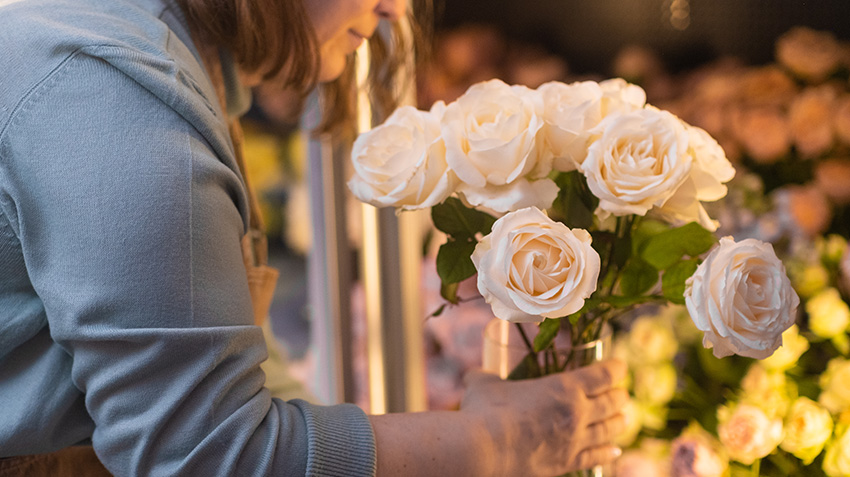
Losing a loved one is one of the most heartbreaking experiences anyone can go through.
During such a painful time, offering a floral tribute can be a meaningful way to express sympathy and show support for the grieving family. Traditional funeral flowers have long been a symbol of respect, love, and remembrance. However, understanding the proper etiquette surrounding funeral flowers is crucial to ensure that your gesture is heartfelt and appropriate. This blog post will help you become familiar with the etiquette of sending traditional funeral flowers.
The Significance of Funeral Flowers
Flowers have always held deep symbolic meaning, and their presence at a funeral service speaks volumes. Whether you are sending funeral flowers to a funeral home or a family’s home, these blooms offer comfort and peace during a difficult time. Different flowers carry specific meanings that can reflect your message of love and respect. For instance, lilies are often associated with purity and peace, while roses are symbolic of love and admiration. Knowing the meaning behind the flowers you choose will allow you to send a message that resonates with the grieving family, conveying not just sympathy, but also respect for the life of the deceased.
Choosing the Right Flowers
The type of flowers you select can convey a message of peace, love, or remembrance, depending on the context of the funeral. Traditional funeral flowers such as lilies, chrysanthemums, and roses are often seen as appropriate choices for the occasion. Lilies, in particular, are frequently used due to their association with peace and renewal. Roses, on the other hand, are symbols of love and admiration, making them a perfect option for expressing deep respect. Other common choices include carnations, which symbolize a love that lasts beyond death, and orchids, which represent beauty and strength.
It’s important to also consider the deceased’s cultural or religious background when selecting funeral flowers. Some cultures or religions may have specific flower traditions or prohibitions, and understanding these nuances can ensure that your gesture is appropriate and respectful.
Selecting the Right Arrangement
The type of arrangement you choose is just as important as the flowers themselves. Funeral flower arrangements vary in style, each suited to different aspects of the ceremony.
- Wreaths: These circular arrangements are a traditional symbol of eternal life and are often displayed at the front of the service, near the casket.
- Sprays: Usually larger and more formal, sprays can be placed on the casket or around the service area. They are often sent by close family or friends as a prominent tribute.
- Baskets and bouquets: These are typically sent to the family’s home after the service as a sign of ongoing support. They offer a softer, more personal touch.
When choosing your arrangement, think about the specific needs of the service. For example, wreaths or sprays may be more appropriate for the funeral itself, while baskets and bouquets can be a meaningful gesture for the family afterwards. It’s always a good idea to ask the funeral home or the family about any preferences they may have in terms of floral tributes.
Etiquette for Sending Funeral Flowers
The etiquette surrounding who sends funeral flowers and when can vary depending on the relationship between the sender and the deceased. For example, immediate family members often send larger arrangements, while friends or colleagues may choose smaller tributes. Regardless of your relationship, sending flowers is a way to show your support, so it’s important to select an arrangement that reflects the depth of your connection.
The timing of when you send your funeral flowers also matters. It’s best to send flowers before the funeral service, allowing them to be displayed at the service or during visitation hours. However, if you didn’t have time to send them before the service, you can still send flowers to the family’s home after the funeral. Some people may prefer to send flowers to the family’s home rather than directly to the service, as this can provide comfort during the days that follow.
Personalizing Your Tribute
Adding a personal touch to your floral tribute can show the family that you took the time to think about the deceased and their memory. Consider including a heartfelt message with your flowers, offering words of comfort or remembering the good times shared with the deceased. If you know the deceased’s favorite flowers or colors, incorporating these elements into your arrangement can make the gesture even more meaningful.
For those who prefer a different approach, there are alternative ways to honor the deceased. Potted plants, for example, can provide a lasting tribute that the family can keep in their home. Also, making a charitable donation in memory of the deceased is a thoughtful alternative to sending flowers, especially for those who may not wish to receive floral tributes.
Cultural and Religious Considerations
When sending traditional funeral flowers, it’s essential to be mindful of cultural and religious customs. Different cultures have specific guidelines regarding floral tributes, and it’s important to respect these practices.
- Christian Funerals: Flowers are widely accepted, with lilies, roses, and chrysanthemums being common choices.
- Jewish Funerals: In many Jewish traditions, flowers are not typically used, and instead, donations to a charity may be preferred.
- Muslim Funerals: Similar to Jewish traditions, flowers are generally not a part of Muslim funerals. Offering prayers or making a charitable contribution is often more appropriate.
- Buddhist Funerals: In some Buddhist cultures, flowers are offered as a symbol of the impermanence of life. While flowers are acceptable, they should be modest and simple.
It’s always a good idea to check with the family or funeral home if you are unsure about whether flowers are appropriate for a particular funeral service.
Common Mistakes to Avoid
While sending funeral flowers is a beautiful gesture, there are a few mistakes to avoid to ensure your tribute is respectful and appropriate.
- Overly Bright or Cheerful Flowers: Avoid flowers that may be too bright or cheerful for the somber tone of the event.
- Excessive Arrangements: Be cautious about choosing overly elaborate arrangements that could overwhelm the family. Simple, elegant flowers often speak louder.
- Disregarding Cultural Traditions: Ensure you are aware of any cultural or religious prohibitions or preferences before sending flowers.
Traditional Funeral Flowers are a Meaningful Gesture
Sending traditional funeral flowers is a heartfelt way to express your sympathy and honor the memory of a loved one. These flowers offer comfort, beauty, and a symbol of respect during a time of loss. By choosing the right flowers, understanding the etiquette behind sending them, and being mindful of cultural or religious considerations, you ensure that your tribute is both meaningful and respectful.
Speak to a professional funeral services provider today to learn more about funeral flowers and other aspects of a meaningful funeral for a loved one.
Frequently Asked Questions
Below are some commonly asked questions to consider:
1. Can I send traditional funeral flowers to the hospital?
It’s generally not recommended to send funeral flowers to the hospital, as flowers are often reserved for the funeral home or family’s residence. Always confirm the appropriate address with the family or funeral home before sending.
2. Are there any flowers that should be avoided?
Yes, flowers with strong fragrances or bright, bold colors can sometimes be overwhelming. Avoid flowers that may cause allergies or be too vibrant, as they may not convey the somber tone of the event.
3. Is it appropriate to send funeral flowers if I am not very close to the deceased?
Yes, even if you didn’t have a close relationship with the deceased, sending funeral flowers can still be a thoughtful way to show your respect and support to the grieving family. Just ensure the arrangement is appropriate for the level of your relationship.



